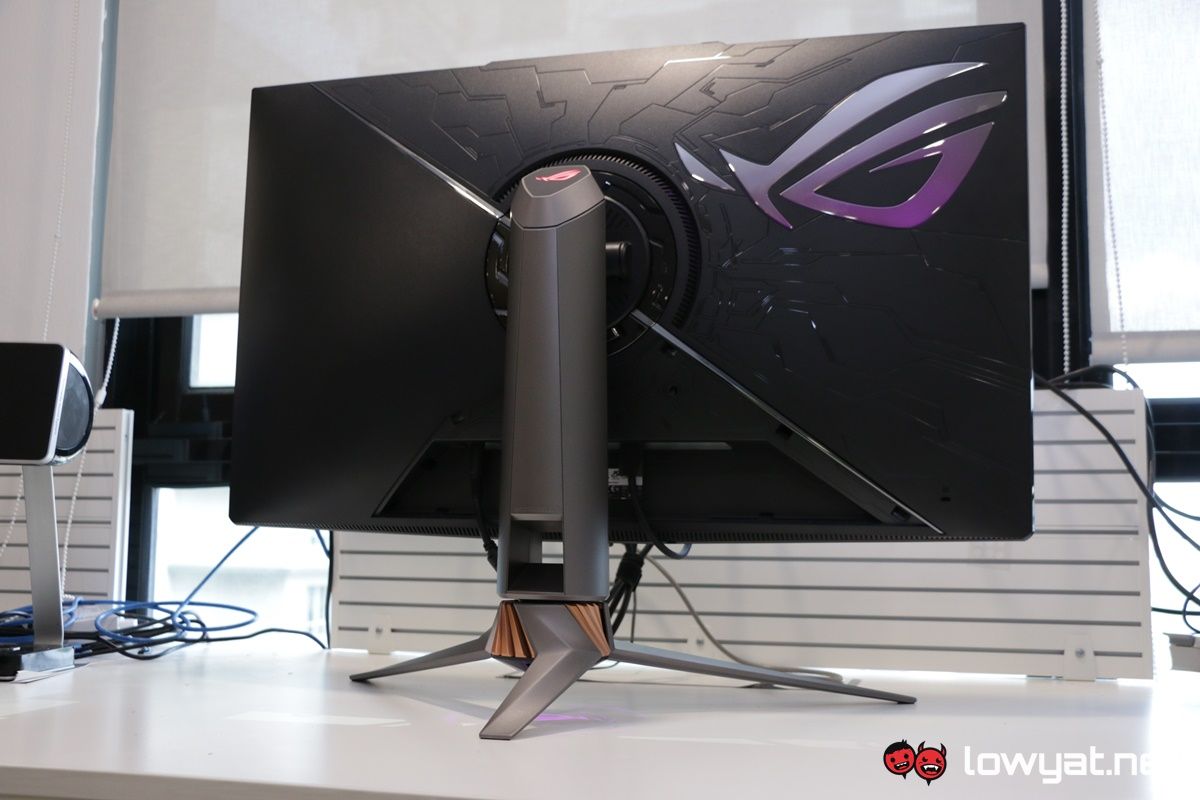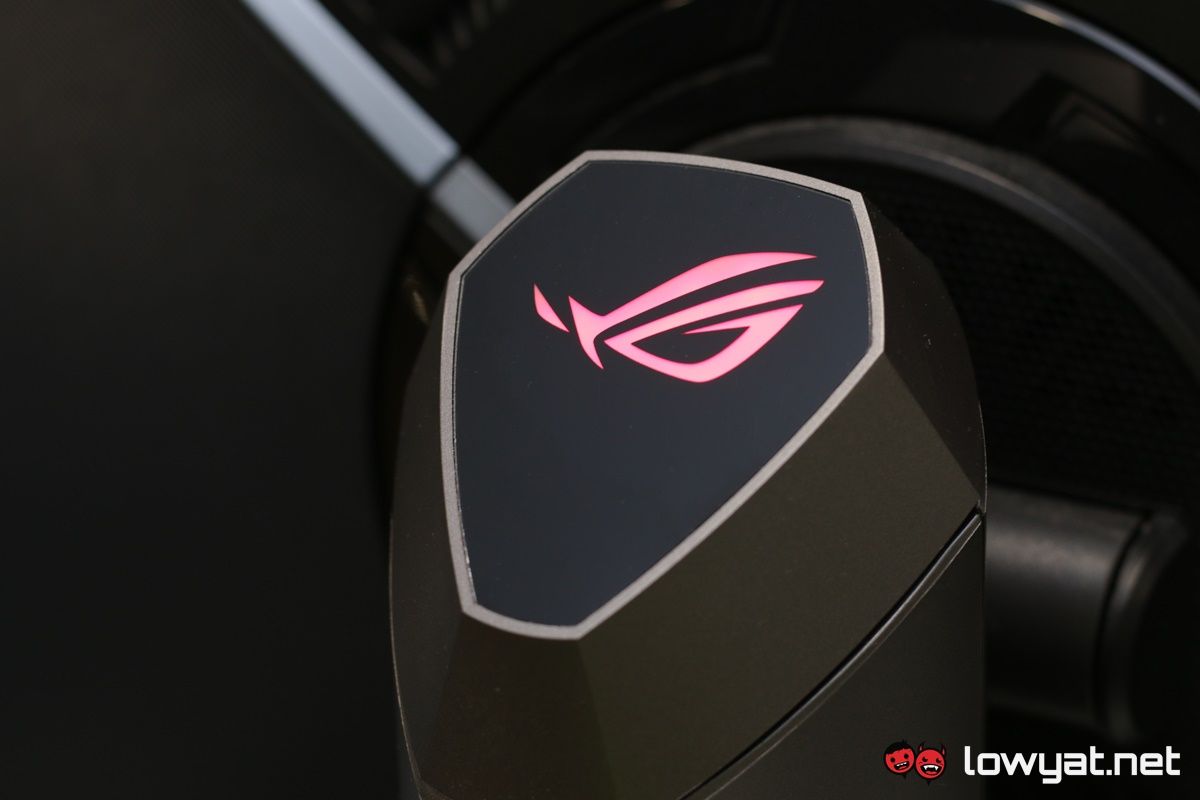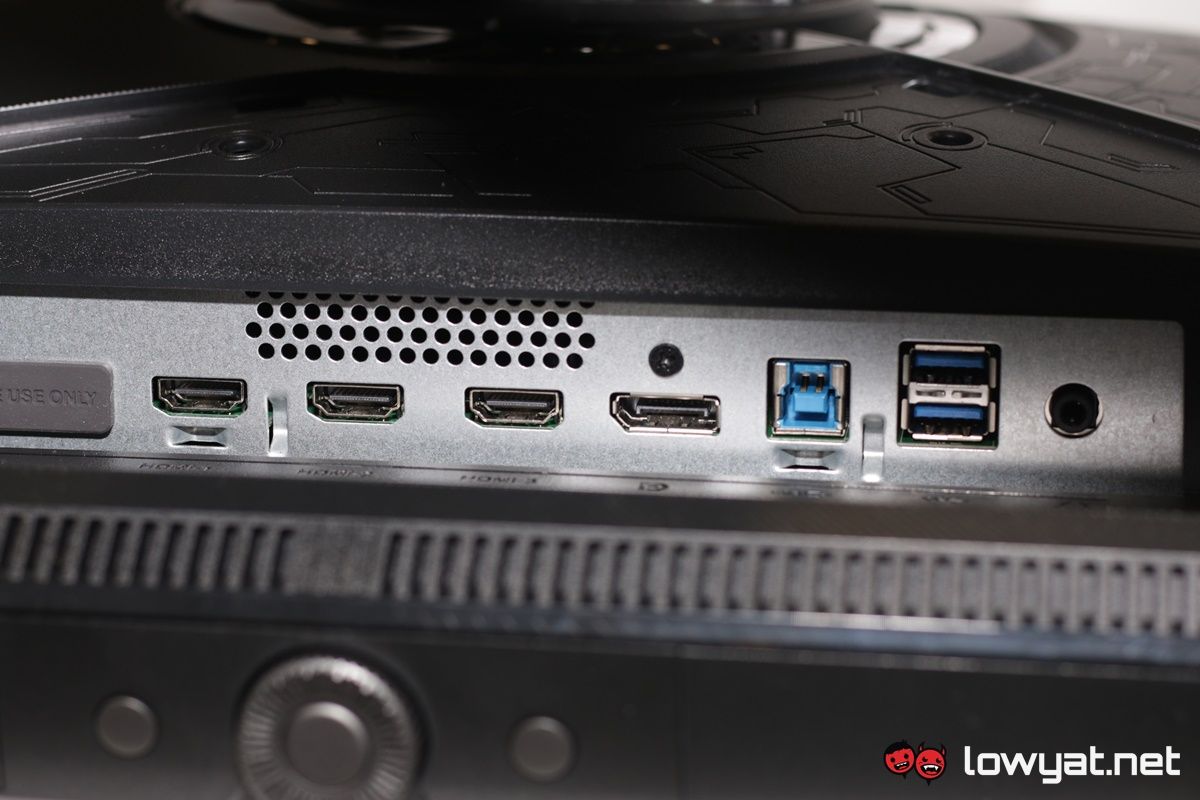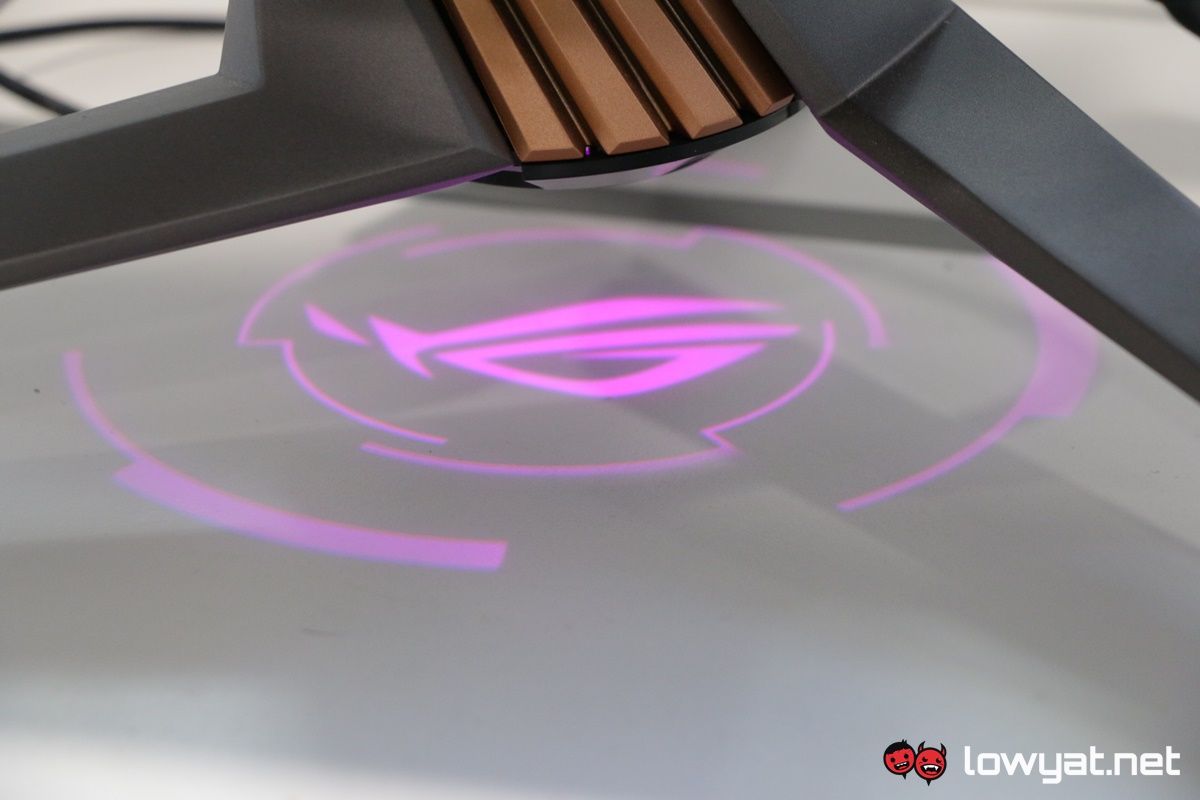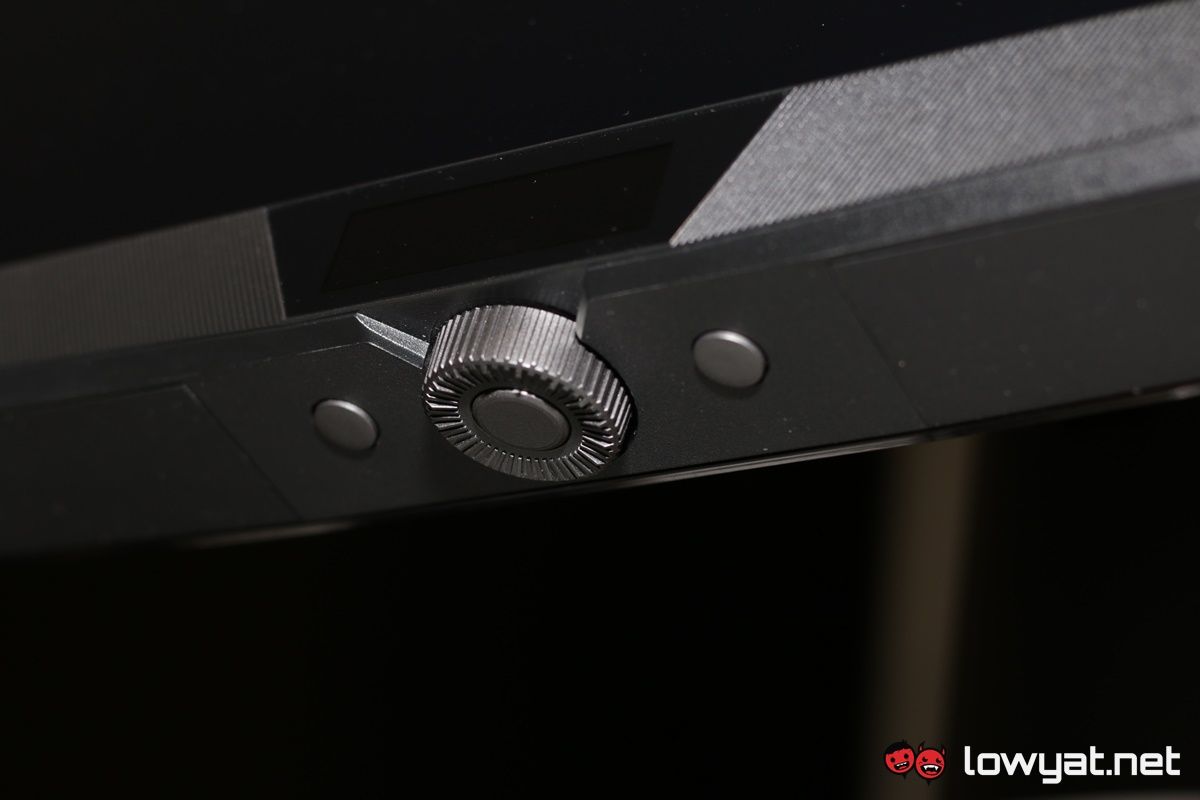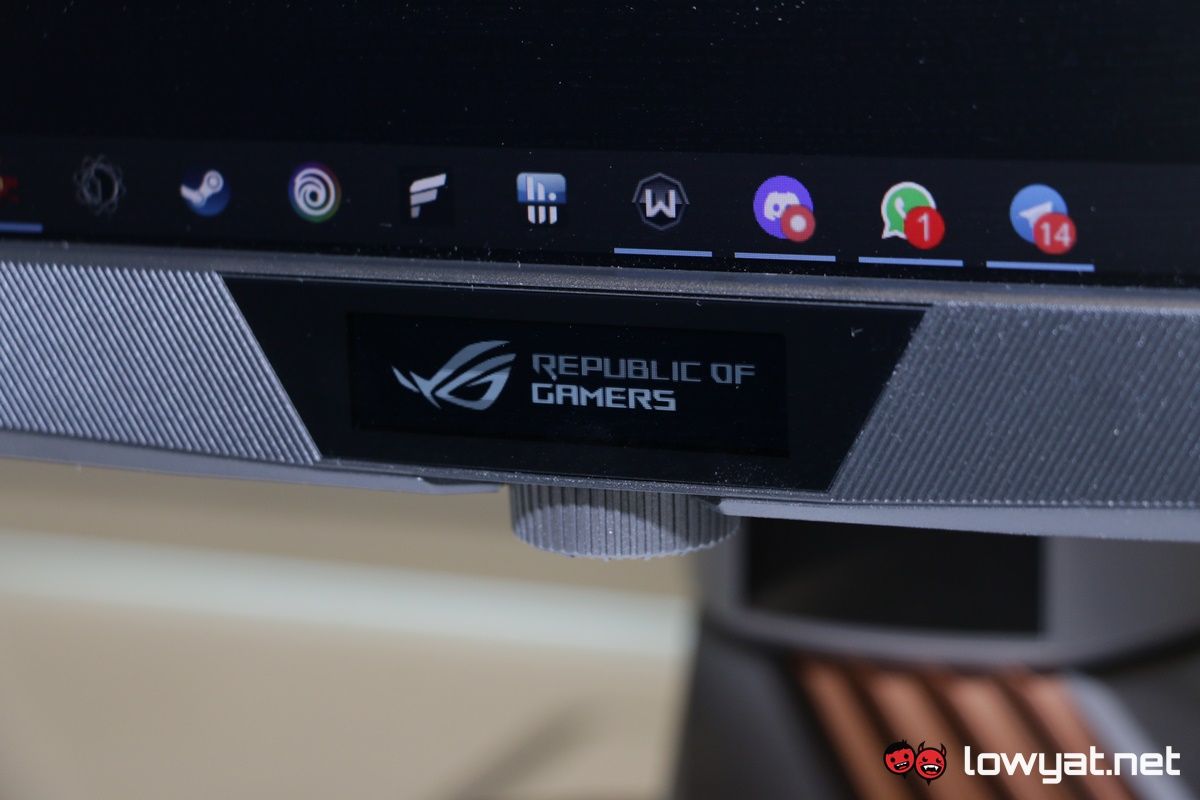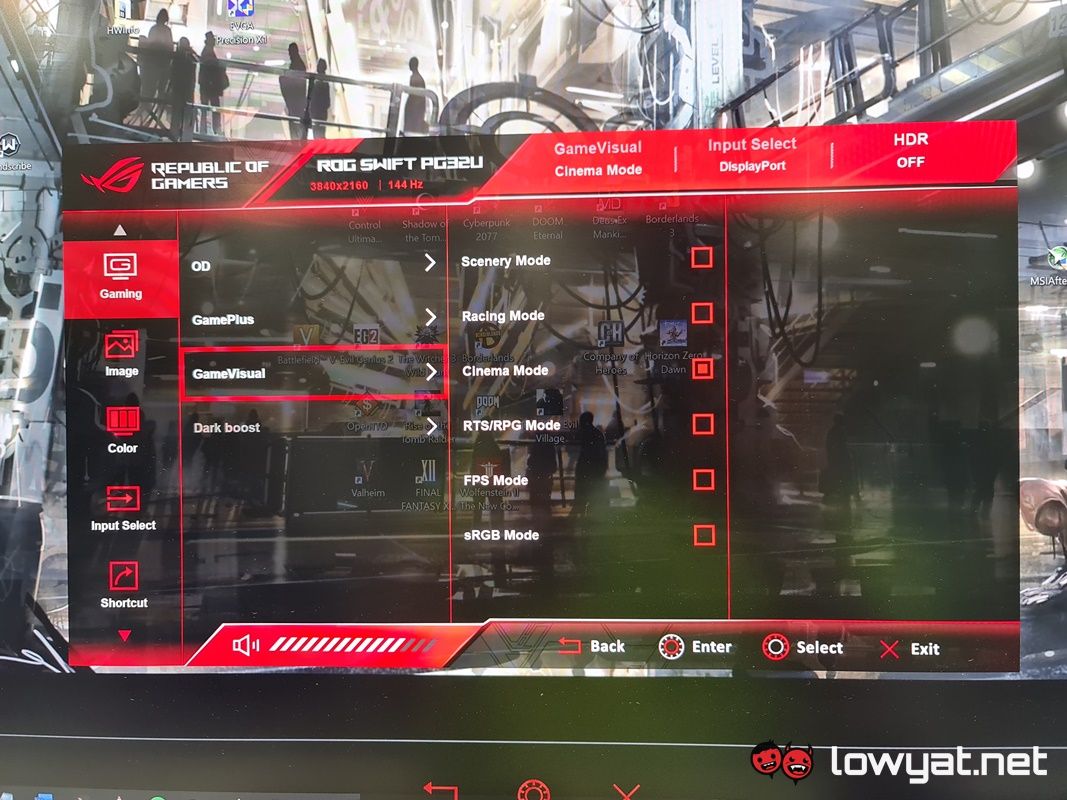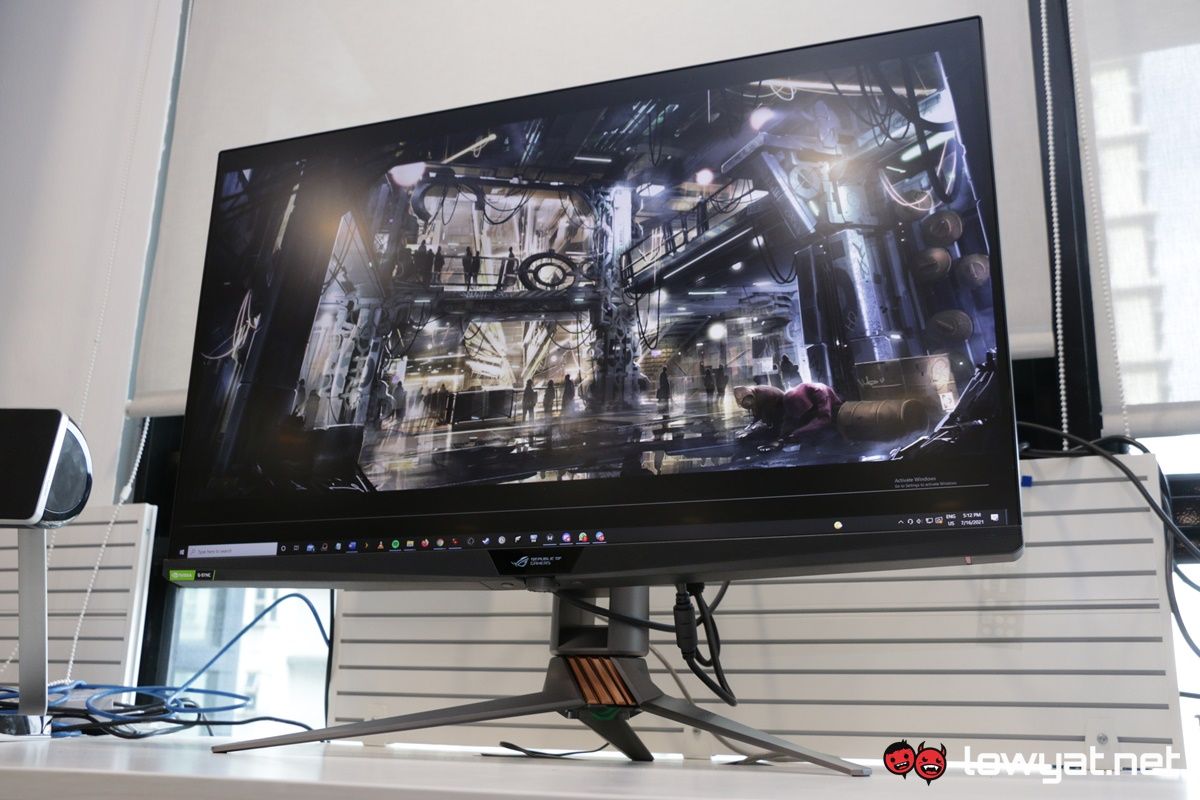For that matter, there’s a lot to love ASUS’ top-tier, gaming monitors, but there’s also one or two caveats that might just turn people off of it.
What Is It?
If neither the title nor introduction was already obvious enough, the PG32UQX is one of ASUS’ more premium gaming monitors, aimed at consumers looking for panel fitted with all the trimmings available for a product in its range. Size-wise, this plus-size monitor has a massive 32-inch panel, made using the same Quantum dot technology first introduced with the PG27UQ. Build-wise, the monitor still employs the asymmetrical three-prong stand, while the panel can be swiveled either left or right and titled to better accommodate your viewing angle while seated. Unfortunately, there is no option to rotate the monitor into portrait mode, but given its high-end status, I can’t think of any reason why anyone would want to view this monitor in that state. Interestingly enough, it looks like ASUS has chosen to do away with the mini-projector that was first introduced with its 27-inch “God monitor”.
Again, like the PG27UQ, the PG32UQX has a maximum resolution of 4K (3840 x 2160), a variable refresh rate that goes up to 144Hz, and HDR certification via the built-in NVIDIA G-SYNC Ultimate module. Because the monitor also uses Quantum Dot technology, it also has the same 10-bit colour depth. Unlike its predecessor, however, this panel gratuitously makes use of the new mini-LED technology. Because of that, the PG32UQX has a maximum brightness rating of 1400 nits, up from the 1000 nits of its predecessor. It’s not just the nits that have changed either; there are two extra HDMI 2.0 ports at the rear, giving it three of the ports, along with the single DisplayPort 1.4 port.
Then there’s the control unit of the PG32UQX. Gone is the nipple-based joystick and multiple buttons at the right side of the monitor. In its place, ASUS has seen fit to shift them to the middle of the monitor, directly in the middle of the base. On top of that, the controls now utilise a new rotating wheel, with a function button sitting in the middle of it, while being flanked by a button on each side. Oh, and there is a LiveDash LED panel on top of it as well that you can either customise to show the ASUS ROG branding or your PC’s specifications. The latter via ASUS’ Armoury Crate app.
Is It Any Good?
To state the obvious, the mini-LED panel of the PG32UQX provides a far brighter picture, literally. Prior to testing the monitor, I used to think 1000 nits was plenty bright, but I now know that that isn’t the case. To put it simply, whites are the brightest I can get, and the levels of blacks are deep as ink, and that is without HDR turned on. In addition, colours look and feel vivid, as well as very accurate. The latter undoubtedly via its 10-bit and 98% DCI-P3 colour accuracy. There is no backlight bleeding around the edges of the display either, but the issue isn’t gone either. More on that later.
On another note – and compared to the PG27UQ yet again – because the PG32UQX actually has thin bezels, the monitor genuinely feels borderless, expansive even. Combine that with the 144Hz refresh rate, 4K resolution, HDR, and a powerful enough graphics card (from NVIDIA, preferably). The overall viewing experience feels very immersive, yet easy on the eyes, even over long periods of time.
The Bad Stuff. Tell Me.
At 32-inches, the PG32UQX’s largesse is also its own drawback; assembling the monitor is easy with step-by-step instructions. However, once assembled, it is deceptively heavier than it looks, and lifting it on to my desk took some considerable effort. Another issue is a particular backlight glaring issue. To be precise, the issue only seems to rear its ugly head whenever you set the PG32UQX’s GameVisual preset to RTS/RPG Mode, at which point the glare becomes very apparent with the backlight bleeding in and around the display. Fortunately, switching the preset to anything else solves the issue but at the same time, I do wonder if this is an issue isolated to the unit I have, or if it is prevalent across all currently existing units. The other major caveat to the PG32UQX is its price. Off the shelf, this 4K HDR behemoth of a monitor costs RM12888. To put in another context, that’s more or less the current price of an NVIDIA GeForce RTX 3090. On a related note, the price is also around the same range as the PG27UQ when it launched in 2018.
Should I Buy It?
At RM12888, the ROG Swift PG32UQX is ASUS’ most expensive high-end gaming monitor on the current market. On that note, it is undeniable that it is a luxury good, clearly aimed at those who have a sizable amount of disposable income in their pockets. Despite its eye-gouging price tag, though, there is also truly little doubt in me that the overall experience with this 32-inch, 4K HDR behemoth with its dedicated NVIDIA G-SYNC Ultimate module, is a real treat to the eyes, both figuratively and literally.
